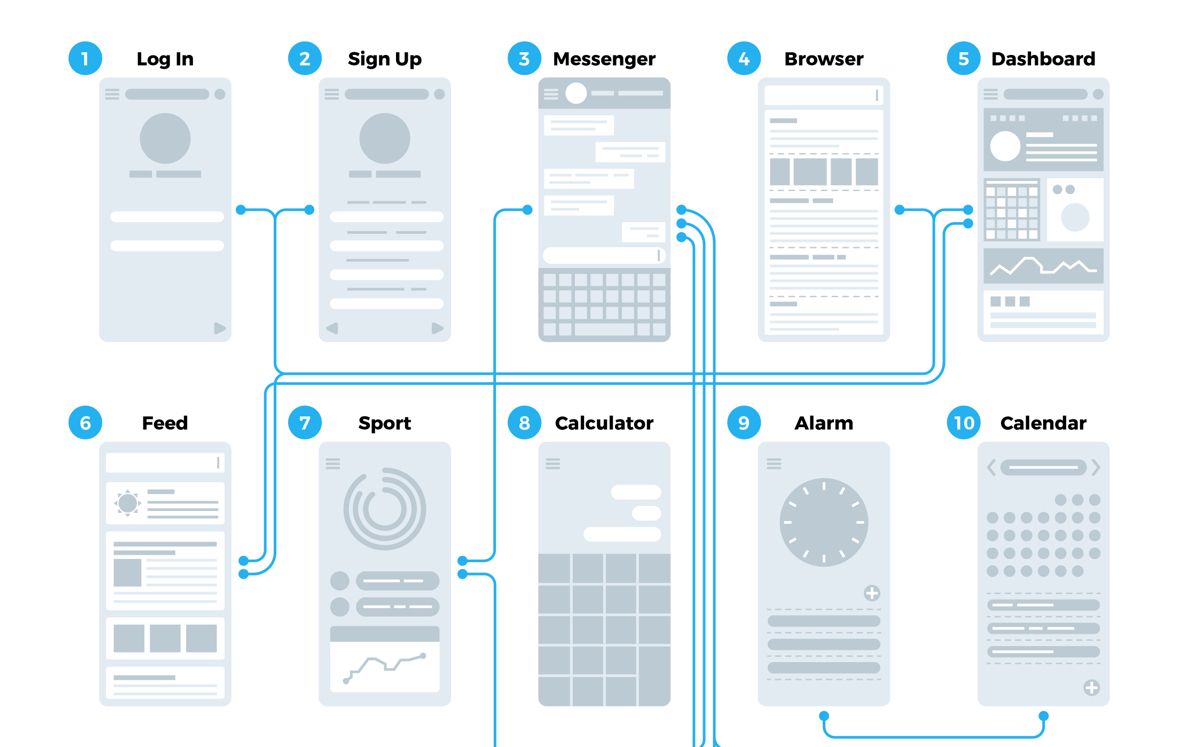With businesses prioritizing delivering exceptional user experiences, user experience (UX) writing has gained significant attention all over the world. UX writing is basically using the right language in the text added to the interfaces of the digital products that help users to achieve their goals.
It involves planning, designing, and writing content for various user interface (UI) components, such as button text, notifications, error messages, menus, tooltips, and other forms of microcopy. This content guides users to navigate through the product or application seamlessly.
In this post, we will share a detailed guide to UX writing that includes what UX writing is, its benefits, UX writing skills, and tips to write stellar UX content.
What Is UX Writing?
As mentioned earlier, UX writing creates user-centered content that aids users with using the digital product or application. UX content needs to be clear, concise, and easy to understand. It requires you to conduct user research, learn user behavior, and understand the UI design for writing a copy that enhances the user experience.
UX writing is essential for every digital product - website, mobile app, desktop application, and more. UX writing helps users understand the purpose of the product and how to use its various functions to achieve desired outcomes. The goal of writing UX content is to offer a consistent message throughout the product to eliminate confusion and help users with a smooth experience when using the product.
Here are a few areas that require UX writing expertise.
- Onboarding - Helps the new users understand the functionality of the product by offering clear instructions about product usage.
- Navigation - Helps users understand how to move between different sections of the product with the help of menus and labels.
- Error messages - Displays messages when a user encounters an error while using the product. For example, such messages tell users what went wrong and how to fix it.
- Call to action (CTA) - Encourages users to take specific actions within the product. For example, the button text clearly explains what will happen when a user clicks on a button or link.
For example, Revolut is a fintech company that has mastered UX writing. The Revolut team understands the user's pain points and offers solutions without sounding overly financial and technical. The copy across the mobile app and website is clear and conversational. Thus, making it easy for users to understand the app and its offerings.

Similarly, Slack, an instant messaging tool leverages microcopy to connect with its audience i.e. office employees and remote workers. Besides sharing tips about using the tool, they share quirky quotes, advice, and more to create a friendly and helpful vibe.

What Are the Benefits of UX Writing?
Good UX writing creates an enjoyable site experience for the users by providing them with detailed instructions about how the product is supposed to work. Here are some of the benefits it offers.
1. Improve Product Usability

UX writing helps users understand the purpose and functionality of a product or application. Clear and concise UX writing can help users complete tasks efficiently and effectively.
Discover the best UI/UX books for 2023!
2. Enhance the Customer Journey

UX writing plays a crucial role in creating a positive customer journey. It helps users navigate the interface and complete tasks with ease. It also helps create a consistent tone and voice throughout the product or application. Monitoring the customer health score allows businesses to proactively address user needs and improve retention.
3. Increase Engagement and Conversions
UX writing can also help increase engagement and conversions. Compelling CTAs and clear instructions can encourage users to take specific actions. Clear and concise microcopy can also reduce confusion and frustration, leading to a better user experience.
What Skills Are Needed for UX Writing?
Here is a list of skills that are a must for exceptional UX writing.
- Writing skills - UX writing requires strong writing skills. The content should be clear, concise, and easy to understand. It should also be consistent throughout the product or application.
- User research - UX writing involves understanding user behavior and needs. Thorough user research can help UX writers understand user behavior and create content that meets their needs.
- Design skills - UX writing is closely tied to design. UX writers should have a basic understanding of design principles, including typography, layout, and color theory. This can help ensure the text is visually appealing and easy to read.
- Technical skills - UX writers should have a basic understanding of HTML, CSS, and JavaScript. This can help them understand how the text will appear in the final product or application. Technical skills can also help UX writers work more efficiently with developers and designers.
- Collaboration skills - UX writing involves working closely with designers, developers, and other stakeholders. UX writers should have excellent collaboration skills and be able to communicate effectively with team members.
If you are looking to hire talent for UX writing, here are some tips to keep in mind.
- Look for candidates who have experience in UX writing. This can include writing for websites, mobile apps, or desktop applications. Look for candidates who have experience conducting user research and creating a content strategy.
- Review writing samples to assess their writing skills.
- Conduct interviews with candidates to assess their UX writing skills. Ask them to describe how they approach UX writing and how they create a content strategy.
- Consider candidates who have a basic understanding of design principles. This can help ensure the text is visually appealing and easy to read. Look for candidates with experience working with design software such as Adobe Creative Suite.
- Publish your job openings on various job boards, social media, and community forums. Partner with coworking spaces to organize recruitment events to reach out to a wide talent pool.
📖 Interested in UI/UX? Check out our UI/UX book that will teach you how to create stunning web projects!
How to Write Stellar UX Content?
Here are some tips to help you write stellar UX content:
- Use plain language. Make sure that the text is easy to understand. Avoid technical jargon and use simple words and phrases.
- Keep it short and concise. Use short sentences and paragraphs to make the text easy to read.
- Use a consistent tone and voice throughout the product or application. This can help create a uniform user experience.
- Use active voice to make the text more engaging. This can help users understand what they need to do to complete a task.
- Include microcopy to provide context and guidance to users. Microcopy includes labels, button text, and error messages.
- Avoid adding long blocks of text by dividing the text into shorter sentences and paragraphs.
- Begin your text with an objective followed by the action needed to achieve it.
- Avoid using jargon in your content. Instead, use familiar and understandable words or phrases wherever possible.
- Do not display all details up front as it can overwhelm users. Instead, reveal additional information on a need-to-know basis.
- Use visual hierarchy to make the text easy to scan. Use headings, subheadings, bulleted lists, and more to break up the text and make it more digestible.
- Test the text with users and iterate based on their feedback. This can help ensure that the text meets the needs of users.
Wrapping Up
UX writing plays a crucial role in providing a seamless and enjoyable user experience thereby contributing to the success of any product. It improves product usability, enhances customer journeys, and boosts conversions. We are certain that this guide has helped you learn more about UX writing and how to create stellar UX content to deliver excellent user experiences and drive your business to success.
About Author
Aanya Rachel is the Content Manager at The Address, a coworking space in Indore, Madhya Pradesh. She is passionate about sharing her knowledge, experience, and extensive research in this field. She writes on a wide range of topics related to coworking, the growth of remote workers, startups, and real estate.




